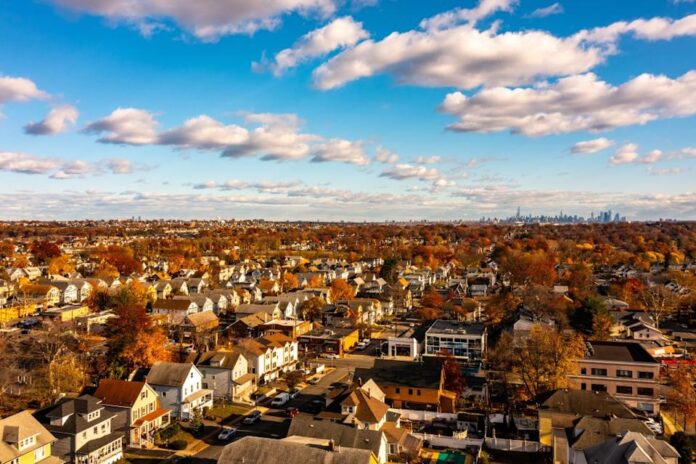The suburban housing landscape surrounding New York City is undergoing a rapid transformation — and New Jersey stands at the forefront of this shift. Recent trends reveal that many suburbs once dominated by homeowners are now becoming renter-majority communities. This evolving dynamic is reshaping how residents live, work, and invest in the region, opening up new possibilities and challenges for both buyers and renters alike.
If you’re curious about what’s driving this change and what it means for New Jersey’s housing market, you’re in the right place. Dive into our detailed breakdown of the latest shifts, inventory trends, and what to expect next in the Garden State’s real estate scene. For deeper insights and expert resources, visit Explore New Jersey Real Estate.
The Rise of Renter-Majority Suburbs in the New York Metro Area
A fascinating trend sweeping across the New York metropolitan area is the growing number of suburbs where renters outnumber homeowners. Once considered classic homeowner havens, many New Jersey suburbs now showcase a majority rental population. This dramatic shift is fueled by several factors:
- Soaring Housing Costs: As home prices surge in urban and suburban areas, many residents are opting to rent rather than buy, seeking more affordable or flexible living arrangements.
- Changing Lifestyle Preferences: Younger generations and professionals often prioritize mobility and convenience, favoring rental options that offer flexibility without long-term commitments.
- Urban Sprawl of Rental Culture: The traditional rental market, once concentrated in city centers, is now stretching into surrounding suburbs, blending city and suburban living.
In the New York metro area, New Jersey suburbs dominate this renter-majority trend. Towns such as Harrison (with an astonishing 81.1% renter households), Union City (79.6%), West New York (78.2%), Passaic (76.5%), and Elizabeth (74.6%) lead the way as some of the most renter-heavy communities in the top 20 U.S. metro areas. This marks a significant departure from past decades when homeownership was the standard suburban expectation.
Moreover, several communities — including Bound Brook, North Arlington, East Franklin, and Secaucus — have flipped from homeowner-majority to renter-majority in just five years, signaling a swift and sustained demographic evolution.
In places like Paterson and Elizabeth, the influx of renter households has been particularly notable, with each city adding over 3,500 renter households during this short period. Altogether, across the broader metro area, renter households now outnumber homeowners in 44 suburbs — a clear indicator that rental living is no longer confined to the city limits.
What This Means for Buyers, Renters, and Investors in New Jersey
The expansion of renter-majority suburbs is influencing the New Jersey real estate market in several key ways:
- Increased Demand for Rental Properties: Investors may find opportunity in acquiring or developing rental units in these burgeoning communities.
- Growing Need for Flexible Housing Solutions: With more residents renting, there’s rising interest in varied rental options — from traditional apartments to single-family homes available for lease.
- Shifting Community Dynamics: Suburban towns are adapting to a changing population with evolving needs around transportation, amenities, and local services.
Whether you’re a renter seeking your next home or a buyer ready to enter the market, understanding these trends can guide smarter decisions and open doors to neighborhoods undergoing exciting growth and change.
New Jersey Housing Inventory on the Rise: More Options for Homebuyers
If you’ve noticed an uptick in “For Sale” signs across New Jersey neighborhoods, you’re not imagining things. Housing inventory in the state is steadily increasing, signaling new opportunities for buyers eager to make a move.
In May 2025, New Jersey reported 16,379 active home listings — a healthy 24.11% rise compared to the previous year and a 15.69% jump from April 2025. This increase mirrors a nationwide trend of growing housing inventory, with over 1.5 million homes listed for sale nationally — the highest post-pandemic levels seen so far.
The surge in available homes comes as welcome news to many prospective buyers who have faced fierce competition and limited choices in recent years. While inventory remains below pre-pandemic averages, the gap is closing rapidly, and the market is becoming more balanced.
Median listing prices in New Jersey currently hover around $575,000, showing a slight 0.86% decrease from last year but a modest increase compared to last month. Homes typically stay on the market for approximately 33 days, indicating a steady pace for transactions without the urgency seen in overheated markets.
Why Now is a Good Time to Explore New Jersey’s Housing Market
Whether you’re a first-time buyer, an investor, or someone looking to relocate to a renter-friendly community, New Jersey’s shifting suburban housing market offers new possibilities. With rising inventory, evolving rental patterns, and diverse community options, the Garden State remains a dynamic and attractive place to live and invest.
Stay informed about the latest trends, market data, and neighborhood highlights by regularly checking expert resources and local real estate news. To explore more about New Jersey’s real estate market and find valuable insights for your next move, visit Explore New Jersey Real Estate.
Ready to Discover Your Next Home in New Jersey?
From renter-majority suburbs rich with community spirit to neighborhoods with growing homeownership opportunities, New Jersey’s housing landscape is full of options tailored to your lifestyle. Dive into the market with confidence, backed by the latest information and resources.
For the most up-to-date listings, market trends, and expert advice, be sure to explore the comprehensive real estate coverage at Explore New Jersey Real Estate.











